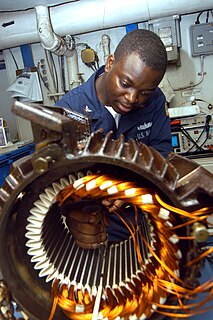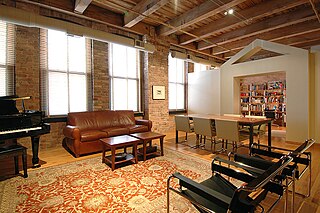
A rose is a woody perennial flowering plant of the genus Rosa, in the family Rosaceae, or the flower it bears. There are over three hundred species and tens of thousands of cultivars. They form a group of plants that can be erect shrubs, climbing, or trailing, with stems that are often armed with sharp prickles. Flowers vary in size and shape and are usually large and showy, in colours ranging from white through yellows and reds. Most species are native to Asia, with smaller numbers native to Europe, North America, and northwestern Africa. Species, cultivars and hybrids are all widely grown for their beauty and often are fragrant. Roses have acquired cultural significance in many societies. Rose plants range in size from compact, miniature roses, to climbers that can reach seven meters in height. Different species hybridize easily, and this has been used in the development of the wide range of garden roses.

Harpocrates was the god of silence, secrets and confidentiality in the Hellenistic religion developed in Ptolemaic Alexandria. Harpocrates was adapted by the Greeks from the Egyptian child god Horus, who represented the newborn sun, rising each day at dawn. Harpocrates's name was a Hellenization of the Egyptian Har-pa-khered or Heru-pa-khered, meaning "Horus the Child".

An electrician is a tradesman specializing in electrical wiring of buildings, transmission lines, stationary machines, and related equipment. Electricians may be employed in the installation of new electrical components or the maintenance and repair of existing electrical infrastructure. Electricians may also specialize in wiring ships, airplanes, and other mobile platforms, as well as data and cable lines.

Electrical wiring is an electrical installation of cabling and associated devices such as switches, distribution boards, sockets, and light fittings in a structure.

A loft is a building's upper storey, attic, or elevated area in a room directly under the roof or just a storage space under the roof usually accessed by a ladder. A loft apartment refers to large adaptable open space, often converted for residential use from some other use, often light industrial. Adding to the confusion, some converted lofts include upper open loft areas.

Architectural lighting design is a field of work or study that is concerned with the design of lighting systems within the built environment, both interior and exterior. It can include manipulation and design of both daylight and electric light or both, to serve human needs.
Sub rosa denotes secrecy or confidentiality. The rose has an ancient history as a symbol of secrecy.

A dropped ceiling is a secondary ceiling, hung below the main (structural) ceiling. It may also be referred to as a drop ceiling, T-bar ceiling, false ceiling, suspended ceiling, grid ceiling, drop in ceiling, drop out ceiling, or ceiling tiles and is a staple of modern construction and architecture in both residential and commercial applications.
Sub Rosa is the name of the New Zealand Intelligence Corps association. Its members are drawn from serving and retired members of the Corps and others that have served in intelligence positions in the New Zealand Defence Force.
A pattress or pattress box or fitting box is the container for the space behind electrical fittings such as power outlet sockets, light switches, or fixed light fixtures. Pattresses may be designed for either surface mounting or for embedding in the wall or skirting board. Some electricians use the term "pattress box" to describe a surface-mounted box, although simply the term "pattress" suffices. The term "flush box" is used for a mounting box that goes inside the wall, although some use the term "wall box". Boxes for installation within timber/plasterboard walls are usually called "cavity boxes" or "plasterboard boxes". A ceiling-mounted pattress is referred to as a "ceiling pattress" or "ceiling box". British English speakers also tend to say "pattress box" instead of just "pattress". Pattress is alternatively spelt "patress" and Wiktionary lists both spellings. The word "pattress", despite being attested from the late 19th century, is still rarely found in dictionaries. It is etymologically derived from pateras. The term is not used by electricians in the United States.

Home construction is the process of constructing a house, generally referred to as a 'home' when giving consideration to the people who might now or someday reside there. Beginning with simple pre-historic shelters, home construction techniques have evolved to produce the vast multitude of living accommodations available today. Different levels of wealth and power have warranted various sizes, luxuries, and even defenses in a "home". Environmental considerations and cultural influences have created an immensely diverse collection of architectural styles. From castles to mud thatches, mansions to shanties, the 'home' has grown to represent a seemingly limitless array of structures.

Knob-and-tube wiring is an early standardized method of electrical wiring in buildings, in common use in North America from about 1880 to the 1930s. It consisted of single-insulated copper conductors run within wall or ceiling cavities, passing through joist and stud drill-holes via protective porcelain insulating tubes, and supported along their length on nailed-down porcelain knob insulators. Where conductors entered a wiring device such as a lamp or switch, or were pulled into a wall, they were protected by flexible cloth insulating sleeving called loom. The first insulation was asphalt-saturated cotton cloth, then rubber became common. Wire splices in such installations were twisted together for good mechanical strength, then soldered and wrapped with rubber insulating tape and friction tape, or made inside metal junction boxes.
C-Bus is a communications protocol based on a seven layer OSI model for home and building automation that can handle cable lengths up to 1000 metres using Cat-5 cable. It is used in Australia, New Zealand, Asia, the Middle East, Russia, United States, South Africa, the UK and other parts of Europe including Greece and Romania. C-Bus was created by Clipsal Australia's Clipsal Integrated Systems division for use with its brand of home automation and building lighting control system. C-Bus has been briefly available in the United States but Schneider Electric has now discontinued sales in the United States.

A wireless light switch is a light switch that commands a light or home appliance to turn itself off or on, instead of interrupting the power line going to the light fixture. There are different ways to communicate between the switch and the fixture:
- Using radio transmission: A radio receiver is typically wired or screwed into a fixture or device, wired or otherwise connected to the electrical system of the building or plugged into an outlet. The radio receiver's memory is programmed by any number of means to respond to certain selected "switches" or remote control transmitters.
- Using the existing power lines : A receiver is plugged into an outlet and a device is then plugged into the receiver. The plug-in receiver is then programmed to the switches. Some devices are hard wired into ceiling light fittings, making for a hidden system.

Track lighting is a method of lighting where light fixtures are attached anywhere on a continuous track device which contains electrical conductors. This is in contrast to directly routing electrical wiring to individual light positions. Tracks can either be mounted to ceilings or walls, lengthwise down beams, or crosswise across rafters or joists. They can also be hung with rods from especially high places like vaulted ceilings.

The State Savings Bank Building is a heritage-listed large bank building and commercial offices situated at 48-50 Martin Place, in the Sydney central business district in the City of Sydney local government area of New South Wales, Australia. It was designed by Ross & Rowe Architects and Consulting Engineers and built from 1925 to 1928 by Concrete Constructions Ltd. It is also known as The Government Savings Bank of New South Wales, Commonwealth Bank building (former), and CBA Building. After several decades of use by the Commonwealth Bank of Australia, including as its headquarters from 1984, it was purchased by financial services company Macquarie Group in 2012, refurbished, and now serves as Macquarie's global headquarters as 50 Martin Place. It was added to the New South Wales State Heritage Register on 17 November 2000.
Homes typically have several kinds of home wiring, including electrical wiring for lighting and power distribution, permanently installed and portable appliances, telephone, heating or ventilation system control, and increasingly for home theatre and computer networks.

Copper has been used in electrical wiring since the invention of the electromagnet and the telegraph in the 1820s. The invention of the telephone in 1876 created further demand for copper wire as an electrical conductor.

Mechanical, electrical and plumbing (MEP) refers to these aspects of building design and construction. In commercial buildings, these elements are often designed by a specialized engineering firm. MEP design is important for planning, decision making, accurate documentation, performance- and cost-estimation, construction, and operating/maintaining the resulting facilities.

An electrical conduit is a tube used to protect and route electrical wiring in a building or structure. Electrical conduit may be made of metal, plastic, fiber, or fired clay. Most conduit is rigid, but flexible conduit is used for some purposes.















